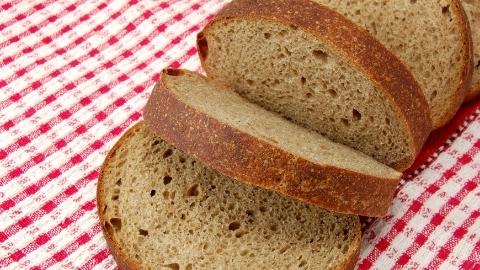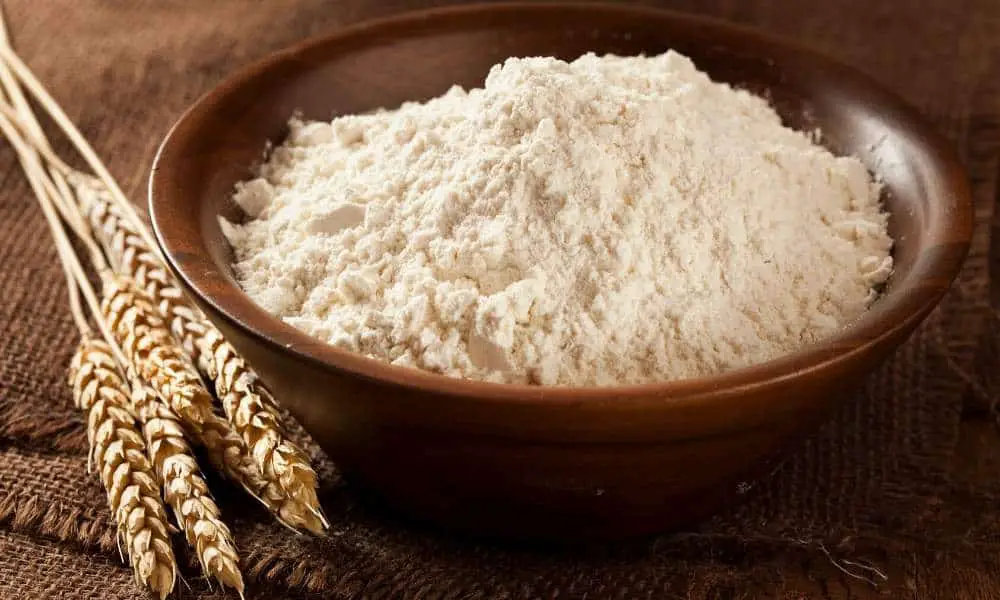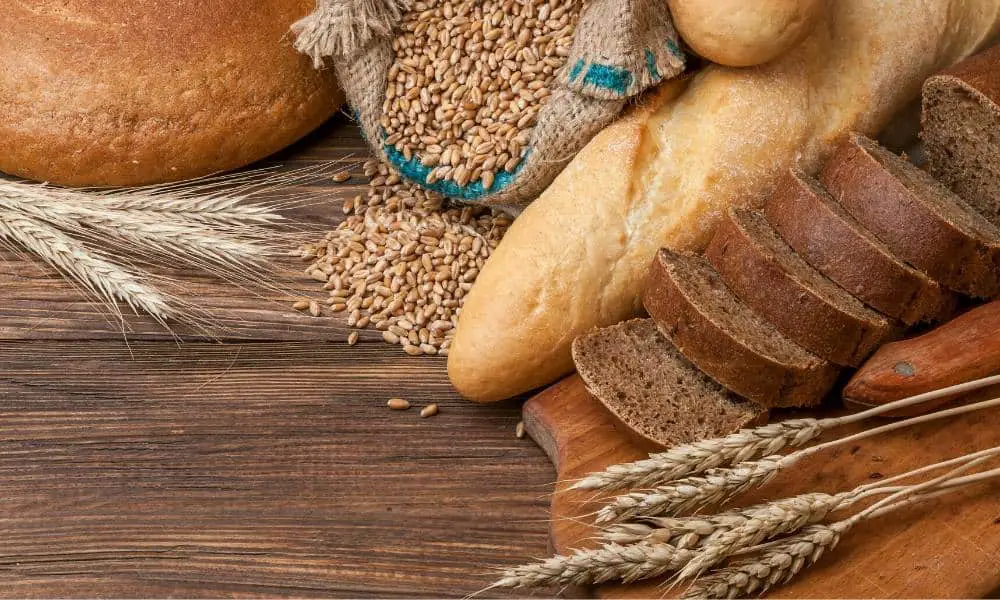You’ve probably seen hard wheat in a list of things to get for long-term food storage. But if you’re anything like me, you typically use flour but don’t directly use hard wheat berries on a regular basis in the kitchen, and you don’t want to spend a bunch of money on something you will never use and end up throwing away later. So you’re probably asking yourself, what is hard wheat used for?
Hard wheat is used to produce flour that is high in protein (approximately 11-15 percent), then it is used in hard-baked goods that have a strong structure such as flatbreads, pan breads, artisan breads, rolls, buns, tortillas, cereal, general-purpose flour, croissants, bagels, pizza crust, and Asian-style noodles.
Hard wheat produces flour that is high in protein. The higher the protein content the stronger the gluten quality is. After hard wheat is ground into flour, using a Wheat Grinder, and mixed with water, the protein content is converted to gluten. Gluten is what helps the bread stretch and hold in the gas (air) as the bread rises and is baked which is desired when making bread flour. This combination makes it so you can have a nice fluffy loaf of bread instead of a heavy, dense loaf of bread.
How much wheat and flour should you have in your food storage? Check out our free and extensive food storage calculator tool to help make your planning effortless and simple!
Types of Hard Wheat And What They Are Used For
The four types of hard wheat include:
- Hard Red Winter
- Hard White
- Hard Red Spring
- Durum

Hard Red Winter is used to make:
- yeast bread
- rolls
- flat breads
- tortillas
- cereal
- general purpose flour
- Asian-style noodles

Hard White is used to make:
- whole wheat white flour
- pan breads
- tortillas
- flat breads
- Asian-style noodles

Hard Red Winter is used to make:
- bread
- rolls
- flat breads
- croissants
- bagels
- pizza crust
- general purpose flour
| Type of Hard Wheat | What it’s Used For |
|---|---|
| Hard Red Winter Wheat | Yeast bread, hard rolls, flat breads, general-purpose flour, tortillas, cereal, asian noodles |
| Hard Red Spring Wheat | hearth breads, rolls, flat breads, croissants, bagels, pizza crust, general-purpose flour |
| Hard White Wheat | pan breads, flat breads, tortillas, Asian noodles, whole wheat white flour |
| Durum | pasta, Couscous, Mediterranean breads |
Winter and spring wheats are classified by when they are planted. Spring wheat is planted in the spring and harvested in the fall. Winter wheat is planted in the fall and lives/grows through the winter and is harvested in the summer. Winter Wheats generally have more minerals because of their longer growing season and the extensive root system they develop during the longer growing season.
How Do I Use Hard Wheat?
When using hard wheat it has to first be ground down into a flour. It starts out as what is often called hard wheat berries. These are basically small kernels of wheat that you pour into a wheat grinder and it grinds the kernels into a flour. Grinding wheat is super simple. There are hand grinders that you turn the handle. There are also electric grinders. While the electric grinders are more expensive they are so quick. They can also be super noisy. Hand grinders work just as well and are cheaper but can turn into a workout. Both are great options depending on your budget and how much wheat you plan on grinding with it. A general rule of thumb is grinding one cup of hard wheat berries will be the equivalent of 1.5 cups of flour.
Approximately 1 cup of hard wheat = 1.5 cups of flour
To see great options for hard and soft wheat berries to add to your food storage check out our article Food Storage Items: What are the BEST foods for long term storage?
Wheat Grinders
Over the years I have enjoyed using various grain mills (also known as wheat grinders) to grind different types of wheat berries into a fine or coarse flour. I have learned that some grain mills (grinders) are better in different circumstances depending on the type of flour wanted or other desired outcomes. To know exactly what grain mill is right for you read our article Best Grain Mills (Wheat/Flour grinder), Ultimate Buys Guide.
Why Not Just Use All-purpose Flour?
All-purpose flour you buy at the store is less work so it can be super tempting to just go with the quick and sometimes cheaper option. Fresh ground hard wheat flour is not exactly like the All-purpose Flour you would normally buy at the grocery store. It has more of a bronze or brown rich coloring to it. This will produce a lightly golden-colored baked good or a loaf of bread than normal all-purpose flour.
If the color alone doesn’t seem more appetizing to not only look at but eat as well this might help. Hard wheat flour is not only a different color than All-purpose flour. All-purpose flour is commonly bleached to speed up the aging process and create a softer flour. However, bleaching also strips a lot of the vitamins and nutrients out of the flour that fresh hard wheat flour still has.
Are hard wheat flour and whole wheat flour the same?
It is a common mistake to think hard wheat flour and whole wheat flour are the same thing. But that is not true.
Hard Wheat Flour

Hard Wheat Flour is milled from a spring or winter wheat (meaning what time of year they are grown/harvested) and has a higher protein content which creates a strong gluten content. A strong gluten content helps the dough stretch and hold in the gas (air) as it rises and bakes. This produces a lighter, more porous texture to your finished product. If you are worried about your bread being too heavy it is common to mix hard wheat flour and all-purpose flour half and half when first starting to bake with hard wheat flour.
Whole Wheat Flour

Whole Wheat Flour is made of the entire wheat berry, including the bran, endosperm and germ. Whole wheat flour has less gluten and produces bread that is more dense and compact. It is also common with whole wheat flour to mix with All-purpose flour to help lighten the texture. Because the germ contains more oil, whole wheat flour spoils more quickly.
Hard Wheat vs. Soft Wheat?
Depending on what you are making will determine what type of wheat you should use. Hard Wheat makes a firmer dough or things like bread and rolls. Hard wheat contains more gluten while soft wheat has more starch and a lower gluten content. Soft wheat makes a softer dough and can be used while making baked goods like pastries, cakes or cookies.
What Is The Shelf Life Of Hard Wheat?
Hard wheat berries can be stored a few different ways. Sealed in a #10 can, in a sealed bag or bucket with an oxygen absorber or in the bag it was bought in.
When sealed in a #10 or in a sealed bucket with an oxygen absorber and kept in ideal storage conditions (cool, dry place) can be stored for 10-15 years.
When bought and stored in a 50 pound back wheat berries can be stored for 1 year. To prolong the life of your hard wheat bought in a 50-pound bag it can easily be transferred to more manageable sized bags that you can put an oxygen absorber in and seal.


